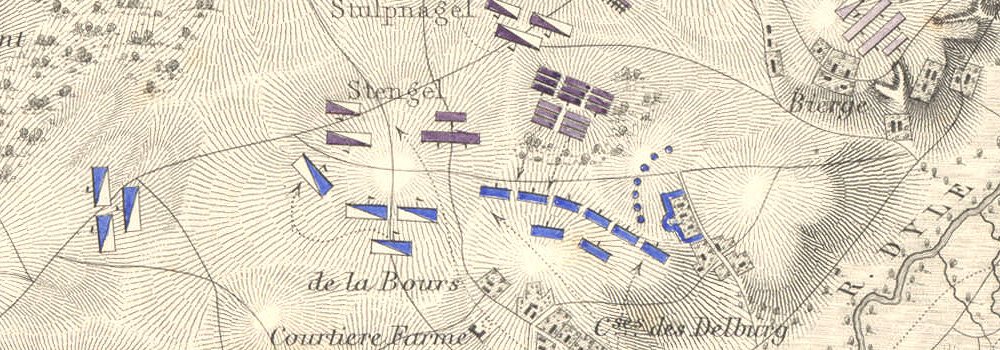The Battle of Castricum (October 6, 1799) saw a Franco-Dutch force defeat an Anglo-Russian force near Castricum, Netherlands. The battle was fought during the War of the Second Coalition against Revolutionary France between French and Dutch forces under the command of General Guillaume Brune and Herman Willem Daendels and British and Russian forces under the command of the Duke of York, Sir Ralph Abercromby and the Prince of Orange.
An Anglo-Russian force of 32,000 men landed in North Holland on August 27, 1799, captured the Dutch fleet at Den Helder on August 30 and the city of Alkmaar on October 3. Following a series of battles at Bergen on September 19 and Alkmaar on October 2 (also known as 2nd Bergen), they faced the French and Dutch armies at Castricum on October 6.
The town of Castricum passed from British-Russian to Batavian-French hands several times until the former finally fled, losing 2536 men and 11 guns; the Batavian-French losses stood at 1382. The defeat persuaded the Duke that his position was untenable. After a chaotic retreat, in which two field hospitals were "forgotten", the parties signed the Convention of Alkmaar on October 10.
Convention of Alkmaar
The British and Russians were allowed to withdraw, without paying reparations, and retaining captured bounty. As a sign of gratitude for enabling him honourably to emerge from the inglorious Dutch imbroglio, Brune received a number of horses from the Duke. By 19 November all the British and Russian troops had been embarked and the expedition was over. In the years following the 1799 invasion, defensive lines were constructed in Holland to protect Amsterdam from future invasions from the north.
In the "Huis met de Kogel" (House with the Cannonball) in Castricum, a cannonball that got stuck in the wall during the battle can still be seen. A plaque beneath the cannonball commemorates the battle. Various locality names in Castricum also provide a reminder of the battle, like the Russenbergen dunes and the Doodelaan street. The Russisch Monument in Bergen marks the fighting there. The French victory was also commemorated on the Arc de Triomphe in Paris as "Alkmaer".
ordres de bataille au début du conflit (First Empire) :
Bataves :
1e division : Daendels (6698 hommes)
Avant garde : Crass
1e bataillon de jagers, 483
2e bat de jagers, 489
1e brigade : Rietveld
grenadiers (3 cies), 299
1e halb brigade 1e bataillon, 571
2e bataillon, 669
3e bataillon, 700
2e cie d'artillerie à cheval
regiment de dragon à 4 escadrons, 492
2e brigade : van zuylen van nyevelt
4e halb brigade 1e bataillon, 678
2e bataillon, 498
2e regiment de cavalerie lourde à 2 escadrons & demi, 198
5e halb brigade 1e bataillon, 529
2e bataillon, 457
3e bataillon, 481
2e division : dumonceau (6448 hommes)
avant garde : gilquin
4e bataillon de jagers : 511
grenadiers à 6 cies, 489
hussards 1 escadron, 114
art à cheval 1/3 de cie, 2 pièces
1e brigade : bonhomme
6e halb brigade 1e bat, 509
3e, 550
7e halb brigade 1e bat, 502
2e, 375
hussards à 3 escadrons, 372
art à cheval 1/3 de cie, 2 pièces
2e brigade : bruce
2e halb brigade 1e bat, 474
2e, 421
3e, 449
6e halb brigade 2e bataillon, 582
3e bataillon de jagers, 298
grenadiers à 3 cies, 208
art à cheval 1/3 de cie, 2 pièces
1e regiment de cavalerie lourde à 4 escadrons, 434
